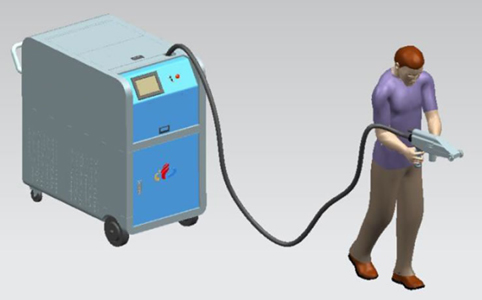The Future of Energy
ITER, the International Thermonuclear Experimental Reactor, is a collaborative global engineering megaproject focused on fusion research and the development of the world’s largest experimental tokamak by 2025. A tokamak reactor confines and controls the plasma of reactive charged particles with complex magnetic fields to harness energy. ITER was formed in 1985 and has since grown into an effort with thirty-five participating countries worldwide under the EU and in India, Japan, Korea, Russia, and the USA. Designed to generate a ten-fold return of net energy, the ITER tokamak will pave the way for next-generation energy technology.


The Challenge
The atypical environment of the fusion reactor presented a unique challenge which entailed the need for a highly customized fiber optic bundle. ITER researchers needed a way to guide plasma emissions from the tokamak to a diagnostic building for further analysis. The ideal fiber optic bundle to achieve this would contain 61 fibers and need to be 60 meters in length to reach the diagnostic building. Fiberguide’s high OH Superguide SFS fiber with a custom defined core diameter of 113µm was selected for this.
Additionally, the stringent safety requirements of the nuclear fusion facility meant that the custom fiber bundle would need to be leak tight, enclosed in a sealed sleeve, and able to transmit optimally under conditions of heavy radiation. Achieving these prerequisites was critical since the fiber optic bundle would pass through secondary confinement barriers and fire sections of the tokamak.
Because of the unique application requirements, qualification testing for assessing leak rates under stable conditions as well as under seismic disturbances combined with destructive fire propagation testing on prototype bundles was a requirement.
Call to Action
The complex design and environmental requirements created a challenge which only a select few custom fiber optic manufacturers could attempt to fulfill. The Fiberguide sales team worked closely with ITER to outline each design and document needs before drafting a specification document with separately valued parts. To ensure all documentation met ITER standards, estimates for each separate effort—engineering, documentation, testing, and assembly—were provided in a detailed breakdown. Effective communication and relationship building with ITER made this step of the process a success. After an executive meeting with ITER team members, engineers at Fiberguide connected with ITER engineers for further discussions regarding the details of the design and some changes to the original specifications to improve the design robustness.
Following these procedures, Fiberguide was awarded the project by ITER and has since been working diligently through the stages of the procurement process, which consist of a conceptual design check, final design, prototyping/qualification, manufacturing design, manufacture, factory acceptance testing, delivery, and final acceptance at the ITER site.
For more information on the fiber bundles, please click here.
 English
English Français
Français Deutsch
Deutsch euskara
euskara Русский язык
Русский язык Italiano
Italiano Português
Português Nederlands
Nederlands Polski
Polski Greek
Greek Lietuva
Lietuva Türkçe
Türkçe 日本語
日本語 한어
한어 中文
中文 தாமில்
தாமில் فارسی
فارسی हिंदी
हिंदी Tiếng Việt
Tiếng Việt ภาษาไทย
ภาษาไทย Pilipino
Pilipino Indonesia
Indonesia தாமில்
தாமில்





